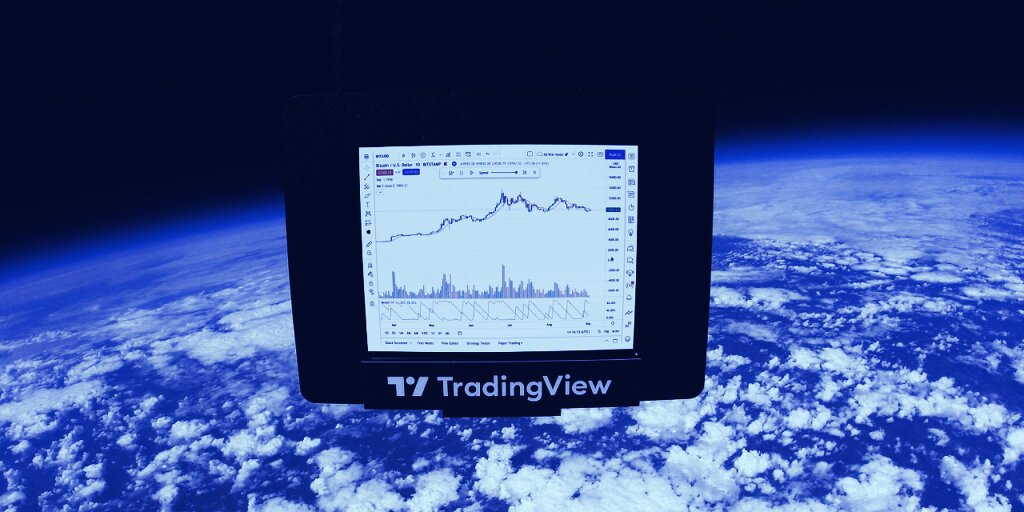Infrastructure is on fire. With new tokens and stablecoins ruling Twitter headlines in 2021, trading venues and the crypto exchange market are now growing at a breakneck pace and competition is fierce. More than 30 exchanges raised significant funding rounds last year, and the trend shows no signs of letting up.
This means that in order to build a competitive advantage, exchanges need to move fast, and grab market share. Both centralized and decentralized exchanges need to scale as quickly as possible—and with the talent shortage that already exists in crypto, developers have little time to focus on creating their own trading utilities, like charts, order tickets, portfolio management or other data visualizations.
The real value comes down to great marketing, and each exchange’s unique features—elements that are predominantly found in backend and middleware development, said Pierce Crosby, general manager of TradingView.
“Since the market is moving this fast,” Crosby told Decrypt, snapping his fingers, “what’s the competitive advantage in building charts yourself? Matching engines, multi-chain trading systems, vibrant communities, connecting crypto wallets and liquidity pools—it’s the proprietary things like this that make one exchange actually distinct from another.”
License to innovate
With speed in mind, several years ago TradingView began open-sourcing its frontend development tools to crypto exchanges and industry publications.
Today, more than 500 trading venues, exchanges, and brokerages—including DEXTools, Bitpanda, Kraken, Blockchain.com, Crypto.com, FTX, BitMEX and Bitstamp, as well as aggregators like CoinMarketCap and CoinGeck—use plug-and-play solutions to integrate TradingView’s utility functions into their applications.
Exchanges reskin, reshape, and customize the look and feel of the tech they license from TradingView to make it their own.
Unburdened by the task of having to reinvent the wheel, developers can turn their attention from infrastructure to innovation.
“We provide the front-end for the crypto industry so that it can move faster and focus on the more important nuances of development,” Crosby said. “Without these core features being open-sourced, the pace at which new products can roll out slows, and thus the market slows.”
The industry is able to move so quickly in large part because it doesn’t have to tread already covered ground. Fireblocks and Zerohash, as well as firms like TradingView, have specialized in quickly scaling up brokerages, and that speed compounds.
Typically, building a decentralized exchange (DEX) from scratch could take anywhere from three to six months, Crosby said. But exchanges that license TradingView’s software can cut development time down to less than a month.
“You might think infrastructure isn’t a sexy business—it’s not flashy like zero-commission trading,” Crosby said. “But if we can help exchanges get their product to market as fast as possible, there’s a lot of value there.”
Users win
But it’s not just about speed to market and scooping up market share.
While plug-and-play tech like TradingView has been a great enabler of growth in the overall crypto industry, it’s also helped boost competition between new exchange platforms.
And competition—despite fragmentation—is always a good thing for the end user, Crosby said.
Exchanges old and new are furiously vying to attract users. The goal of any exchange is to get as many buyers and sellers into the same market as possible.
“The fact that so many DEXs are popping up encourages more competition among them,” Crosby told Decrypt. “This drives down prices and creates savings that ultimately get passed down to new customers. In some ways, it’s reminiscent of the 1990s, with the creation of E*TRADE and discount brokerages. A race to the bottom is savings passed onto the individual.”
Simple, reliable frontend tech allows exchanges to entice users without the manual labor of needlessly developing their own, and this is a trend TradingView continues to expand upon..
“Our mission is to make information more widely available and affordable to the end customer, so they can make more informed decisions themselves,” Crosby said. “And we do that by building these things so that exchanges don’t have to.”
FTX—one of the largest crypto exchanges in the world—is a prime example of TradingView’s plug-and-play technology in action. TradingView facilitates visualization of all of the stock prices and exchange information on FTX.com. The inputs are fully customized to the markets offered by FTX.
“It’s all very non-intrusive,” Crosby said. “The purpose isn’t to be an ad for TradingView, it’s to be a web standard that helps traders maximize the potential of their investments—and to help exchanges innovate even faster because they can standup a front-end in a matter of days rather than months.
Crosby added that he expects to see more crypto and blockchain infrastructure coming to market in 2022. In addition to new entrants like Zerohash, firms like Paxos, MoonPay, Fireblocks, Forte, and others are also capitalizing on providing the “nuts and bolts” for the crypto brokerage boom.
Sponsored post by TradingView
This sponsored article was created by Decrypt Studio. Learn More about partnering with Decrypt Studio.
Source: https://decrypt.co/89646/crypto-exchanges-flourish-when-they-dont-have-to-worry-about-the-frontend



